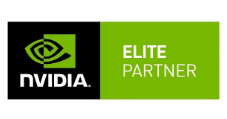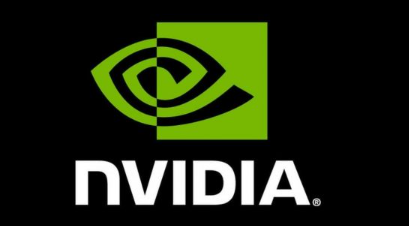Nvidia Partners with Continental on Robocars
MADISON, Wisc. — Nvidia is teaming up with German tier one automotive supplier Continental to develop “top-to-bottom AI self-driving vehicle systems" built on the Nvidia Drive platform. They are planning on a market introduction starting in 2021.
Elmar Degenhart, Continental CEO, and Jensen Huang, founder and CEO of Nvidia, finalize partnership to create AI-based highly automated vehicle systems. (photo: Nvidia)
Elmar Degenhart, Continental CEO, and Jensen Huang, founder and CEO of Nvidia, finalize partnership to create AI-based highly automated vehicle systems.
For Continental, the partnership with Nvidia is neither the first nor an exclusive deal in the automated vehicle platform segment. The company last June made a similar announcement with the BMW/Intel/Mobileye group, Nvidia’s rival, as a member of their self-driving platform alliance.
In contrast, for Nvidia, “This is one of the first end-to-end production (using all Nvidia stacks) partnerships it made with a tier one,” Danny Kim, director and senior advisor at VSI Labs, told EE Times.
While Kim doesn’t think Continental is locked in with Nvidia, he believes the German company is “betting a lot on Nvidia platforms by investing its resources.”
In the announcement, the two companies explained, “Dedicated engineering teams from each company will work together to develop self-driving solutions.” The solution will be based on the Nvidia Drive platform — which includes Nvidia Xavier SoC and Nvidia’s DRIVE operating system and DRIVE Autonomous Vehicle software stacks. The partnership will enable the production of AI computer systems that scale from automated Level 2 features through full Level 5 self-driving capabilities, with vehicles without steering wheel or pedals, they said.
Continental’s partnership with Nvidia was widely expected. Last month at the Consumer Electronics Show in Las Vegas, when EE Times met with Kurt Lehmann, Continental’s corporate technology officer, he casually mentioned, “We do work with Nvidia.” He told us, “We are exploring with everyone to investigate every corner” of the autonomous vehicle technology landscape. With every car OEM following different approaches to automated vehicles, it’s a tier one’s responsibility to “be flexible” and figure out “things that must fit together from top to down,” Lehmann said.
Lehmann cited Xilinx as another chip vendor Continental with whom is working.
Multiple paths Continental is pursuing to develop production of a system include: “1) all Nvidia AV stacks, 2) all Intel/Mobileye stacks, and/or 3) combination of different stacks from different module suppliers, depending on their customer’s needs,” explained Kim.
The power of Tier Ones
The Continental/Nvidia announcement, if anything, demonstrates the growing need for chip vendors to work with tier ones.
After all, “Tier ones are critical ecosystem players who can serve OEMs best in their customization needs,” Kim said. “The [Nvidia-Conti] announcement is significant not because it’s yet another partnership announcement from a AV development ecosystem quarterback, Nvidia, but because it again proves that such a close relationship is necessary between chipset maker and tier one to develop a solid AV system.”
While Google's Waymo, General Motors and Uber vertically integrate customized AV stacks for their AV systems, other players are increasingly adopting modular approaches (AV stacks have multiple modules such as mapping, perception, object detection, path planning modules), with different suppliers bringing their own modules to build AV systems, Kim observed. “Tier ones’ biggest mission is to make these modules work and integrate them in a system,” Kim said.
In explaining what looks like everyone partnering with everybody, Kim said, “It’s because the industry is still at the early stage of AV system development. Versatile tier ones may support all different SoC platforms even after their first production system.”
Many tier ones, however, may specialize in select platforms, or more focused on developing interfaces between different modules, he added. “Probably traditional OEM-Tier One relationship (one OEM sourcing only one semi-owned tier one’s system) like Toyota-Denso or Hyundai-Mobis may not be competitive any more, and more versatile and flexible tier ones would survive” in the future.
在线留言询价

Ameya360:Quest Global and NVIDIA to Develop Digital Twin Solutions for Manufacturing Industry
- 一周热料
- 紧缺物料秒杀
| 型号 | 品牌 | 询价 |
|---|---|---|
| CDZVT2R20B | ROHM Semiconductor | |
| RB751G-40T2R | ROHM Semiconductor | |
| TL431ACLPR | Texas Instruments | |
| BD71847AMWV-E2 | ROHM Semiconductor | |
| MC33074DR2G | onsemi |
| 型号 | 品牌 | 抢购 |
|---|---|---|
| BU33JA2MNVX-CTL | ROHM Semiconductor | |
| TPS63050YFFR | Texas Instruments | |
| ESR03EZPJ151 | ROHM Semiconductor | |
| BP3621 | ROHM Semiconductor | |
| STM32F429IGT6 | STMicroelectronics | |
| IPZ40N04S5L4R8ATMA1 | Infineon Technologies |
- 周排行榜
- 月排行榜
AMEYA360公众号二维码
识别二维码,即可关注


请输入下方图片中的验证码:
























